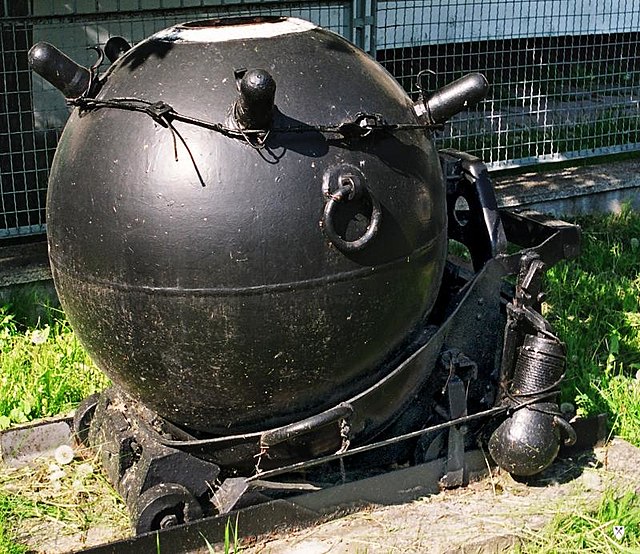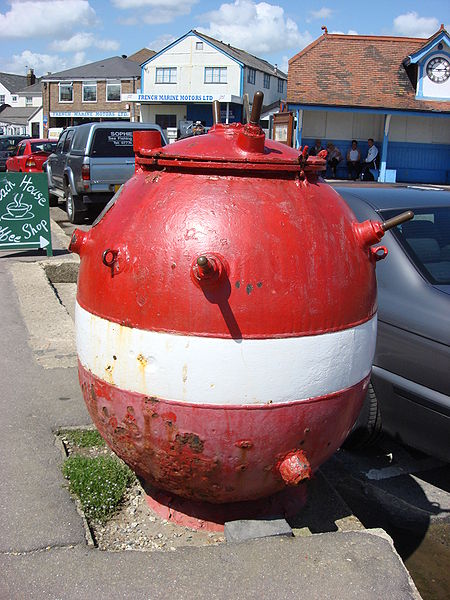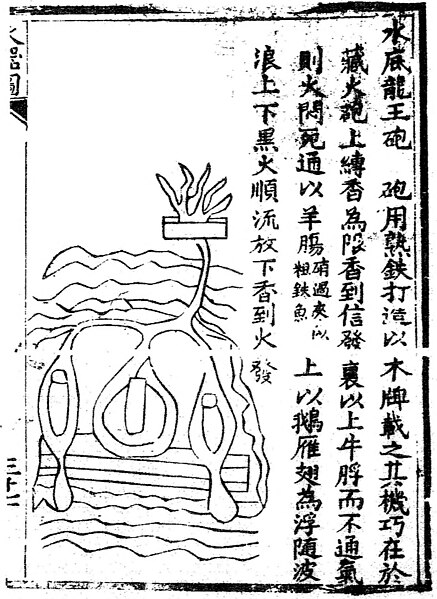The North Sea Mine Barrage, also known as the Northern Barrage, was a large minefield laid easterly from the Orkney Islands to Norway by the United States Navy during World War I. The objective was to inhibit the movement of U-boats from bases in Germany to the Atlantic shipping lanes bringing supplies to the British Isles. Rear Admiral Lewis Clinton-Baker, commanding the Royal Navy minelaying force at the time, described the barrage as the "biggest mine planting stunt in the world's history." Larger fields with greater numbers of mines were laid during World War II.
A Mk 6 mine atop its anchor. Two horn fuzes are visible, but the antenna fuze cannot be seen in this image.
Only the two smallest of the eight steamships converted to lay the barrage remained in commission for conventional minelaying operations. USS Shawmut, shown laying the North Sea mine barrage, sank 23 years later during the attack on Pearl Harbor after being renamed Oglala.
USS Eider (Minesweeper No. 17) (left) in port with submarine chasers alongside during the clearance of the North Sea Mine Barrage in 1919. The leftmost submarine chaser is either SC-254, SC-256 or SC-259 and the others are (left to right) SC-45, SC-356, SC-47, and SC-40.
A naval mine is a self-contained explosive device placed in water to damage or destroy surface ships or submarines. Unlike depth charges, mines are deposited and left to wait until they are triggered by the approach of, or contact with, any vessel or a particular vessel type, akin to anti-infantry or anti-vehicle mines. Naval mines can be used offensively, to hamper enemy shipping movements or lock vessels into a harbour; or defensively, to protect friendly vessels and create "safe" zones. Mines allow the minelaying force commander to concentrate warships or defensive assets in mine-free areas giving the adversary three choices: undertake an expensive and time-consuming minesweeping effort, accept the casualties of challenging the minefield, or use the unmined waters where the greatest concentration of enemy firepower will be encountered.

Polish wz. 08/39 contact mine. The protuberances near the top of the mine, here with their protective covers, are called Hertz horns, and these trigger the mine's detonation when a ship bumps into them.
British Mk 14 sea mine
A 14th-century illustration of a naval mine and page description from the Huolongjing
David Bushnell's mines destroying a British ship in 1777







